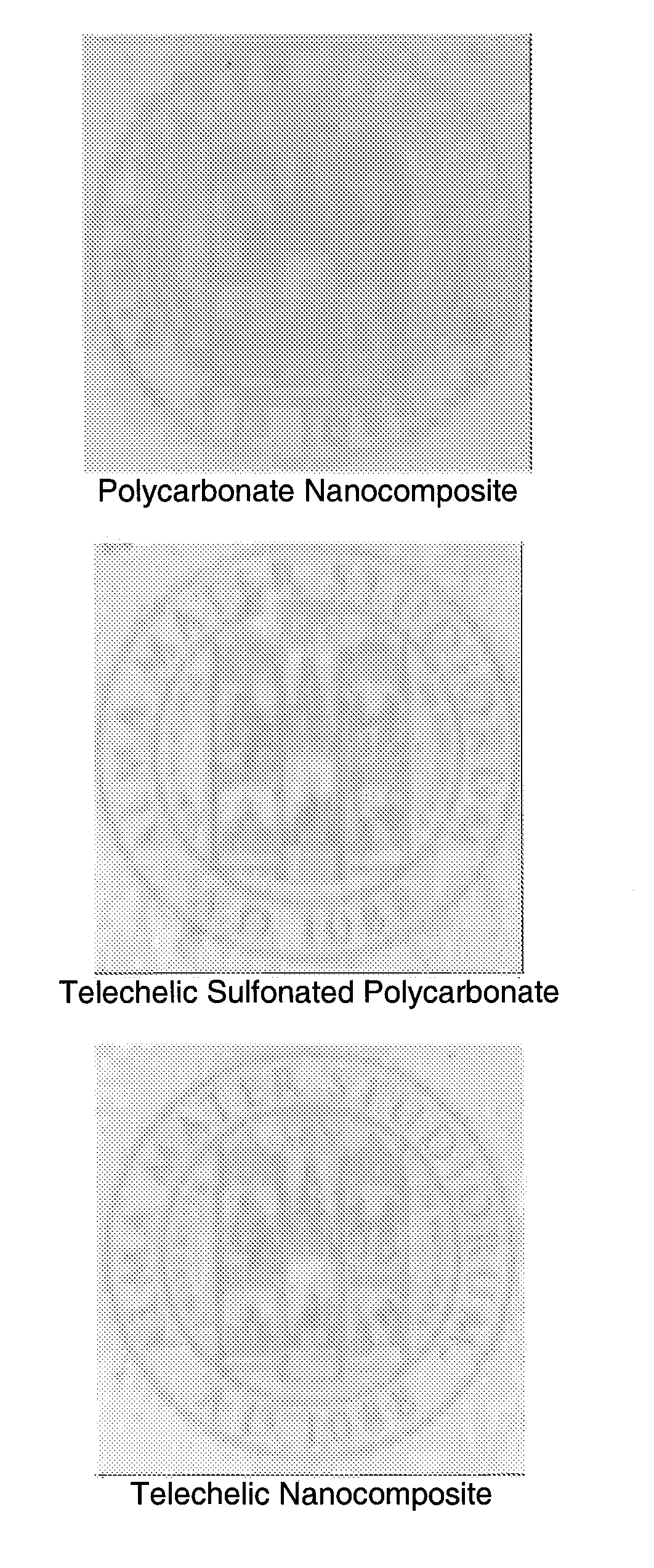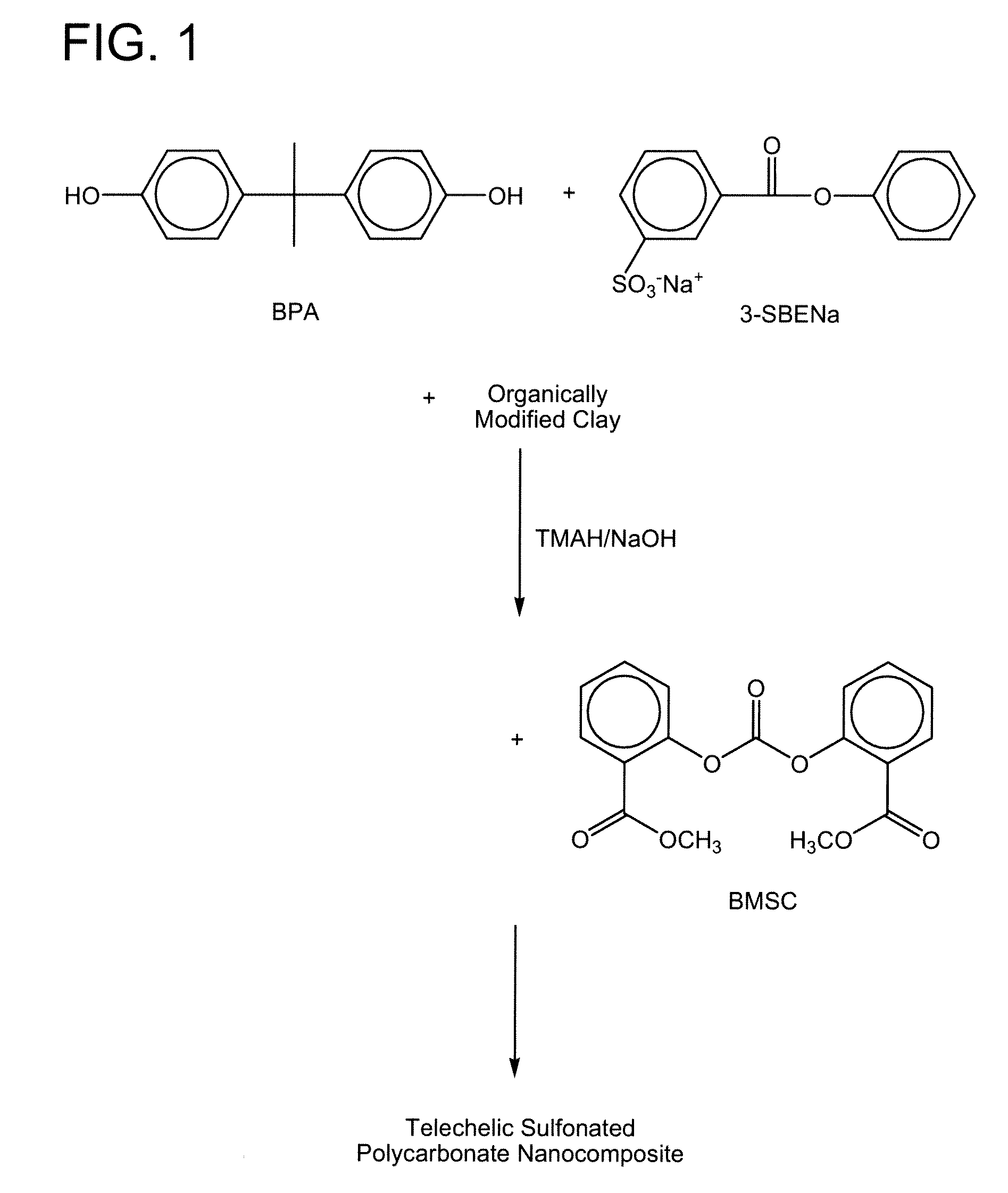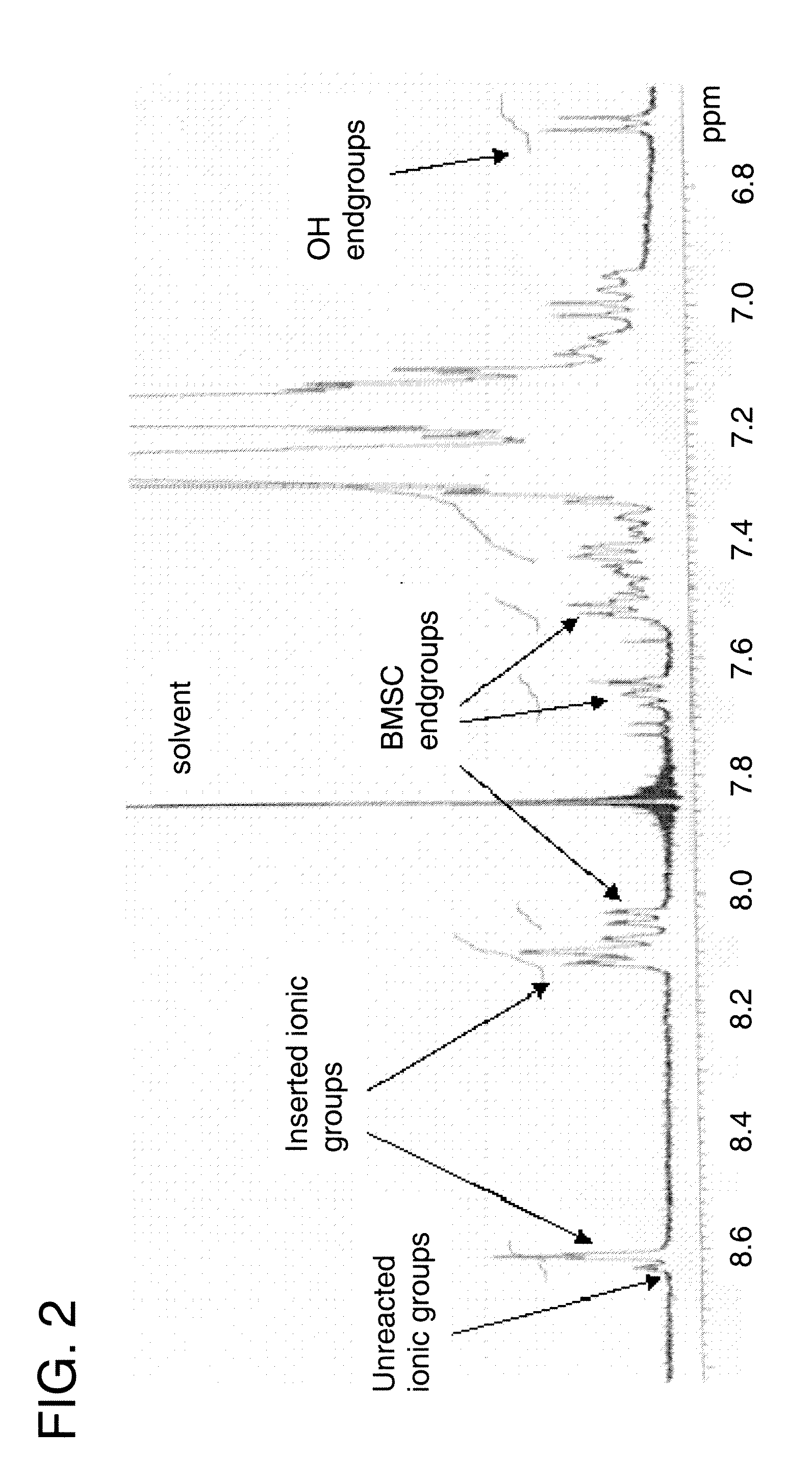Polycarbonate nanocomposites
- Summary
- Abstract
- Description
- Claims
- Application Information
AI Technical Summary
Benefits of technology
Problems solved by technology
Method used
Image
Examples
example 1
[0108]A round bottom wide-neck glass reactor (250 ml capacity) was charged with bisphenol-A (BPA) (25.30 grams; 110.8 millimoles), phenyl 3-sulfobenzoate sodium salt (3-SBENa) (1.00 grams; 3.32 millimoles), organically modified clay (0.846 grams of a sodium montmorillonite with a Cation Exchange Capacity of 128 milliequivalents / 100 grams exchanged with N,N′-dioctadecyl benzimidazolium salt with a d-spacing of 32 angstroms) and the catalyst (a mixture of 2.22×10−2 millimoles tetramethylammonium hydroxide (TMAH) and 8.43×10−5 millimoles of NaOH). The clay was 3 weight percent of this initial reaction mixture, based on the weight of the BPA, 3-SBENa, and clay.
[0109]The reactor was closed with a three-neck flat flange lid equipped with a mechanical stirrer and a torque meter. The system was then connected to a water cooled condenser and immersed in a thermostatic oil-bath at 210° C. and the stirrer switched on at 100 rpm after complete melting of the reactants. After 90 minutes, BMSC (3...
PUM
| Property | Measurement | Unit |
|---|---|---|
| Temperature | aaaaa | aaaaa |
| Temperature | aaaaa | aaaaa |
| Temperature | aaaaa | aaaaa |
Abstract
Description
Claims
Application Information
 Login to View More
Login to View More - R&D Engineer
- R&D Manager
- IP Professional
- Industry Leading Data Capabilities
- Powerful AI technology
- Patent DNA Extraction
Browse by: Latest US Patents, China's latest patents, Technical Efficacy Thesaurus, Application Domain, Technology Topic, Popular Technical Reports.
© 2024 PatSnap. All rights reserved.Legal|Privacy policy|Modern Slavery Act Transparency Statement|Sitemap|About US| Contact US: help@patsnap.com










